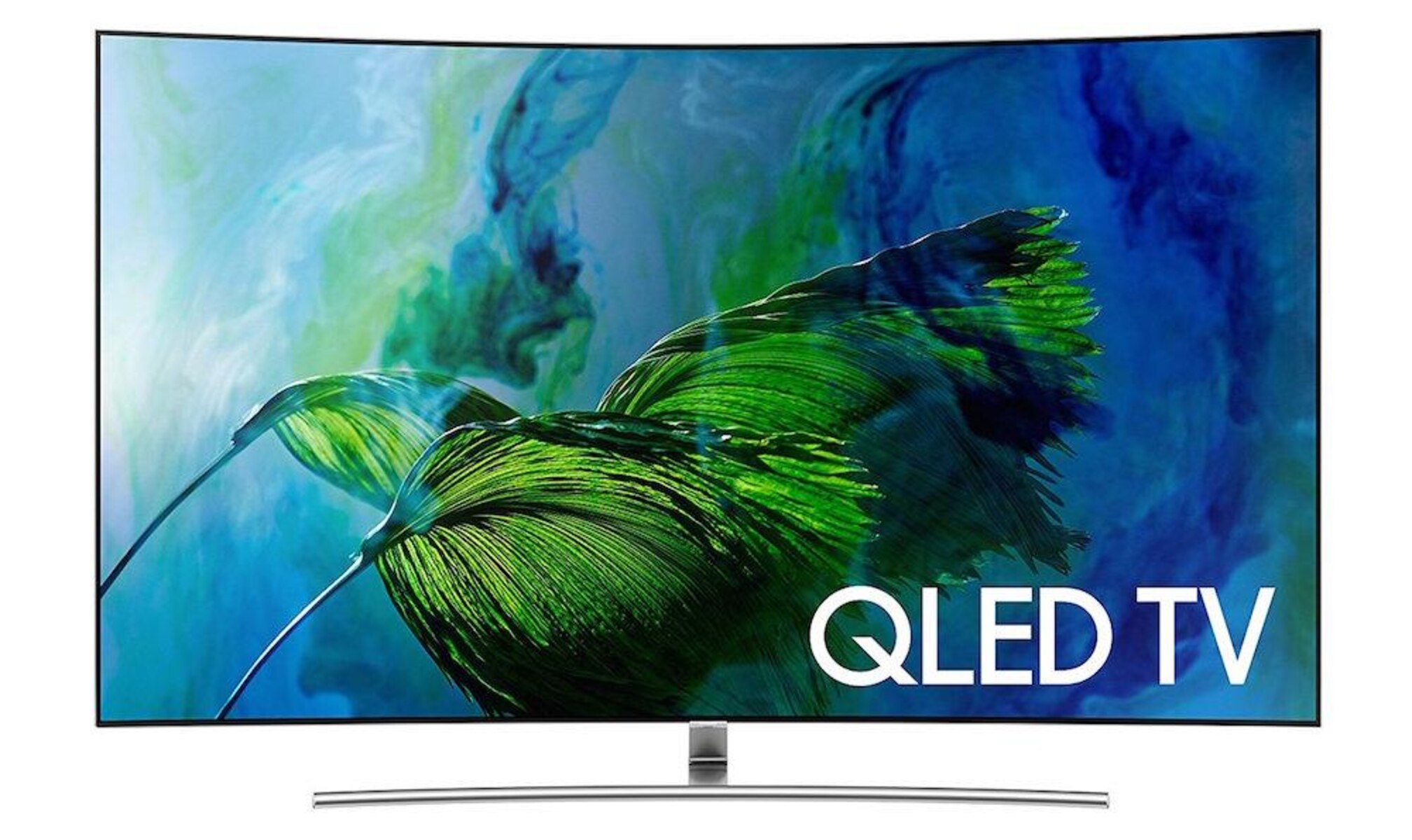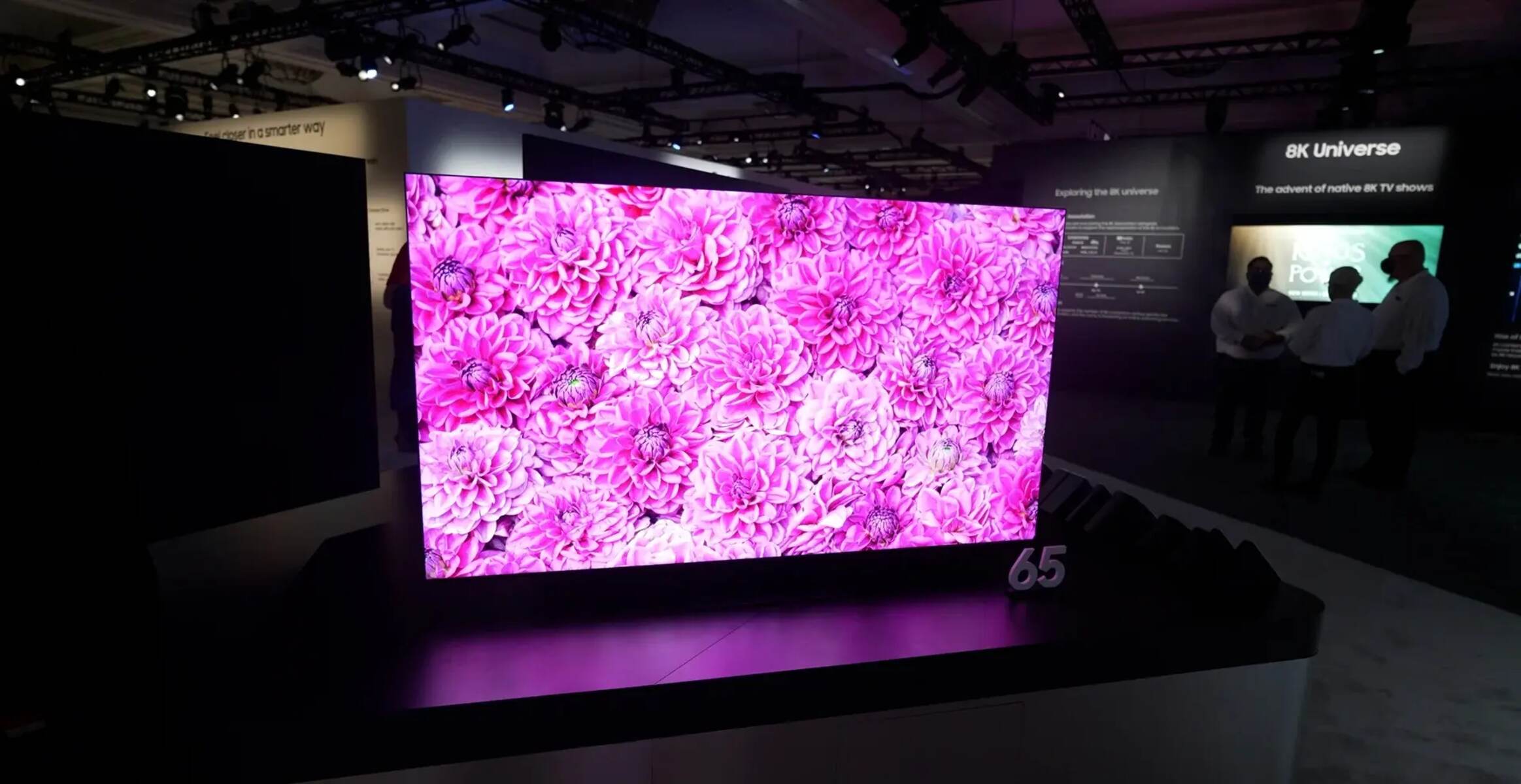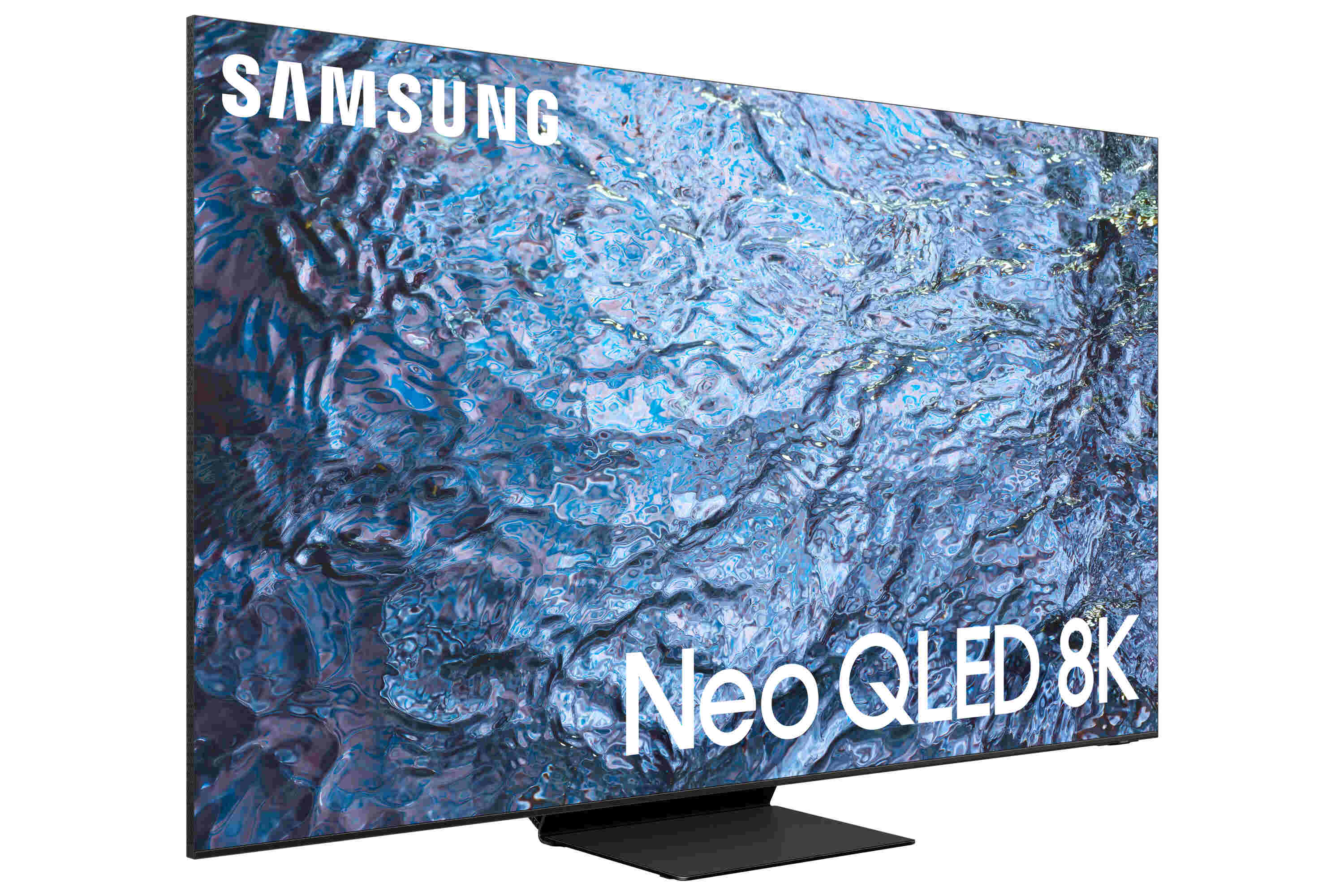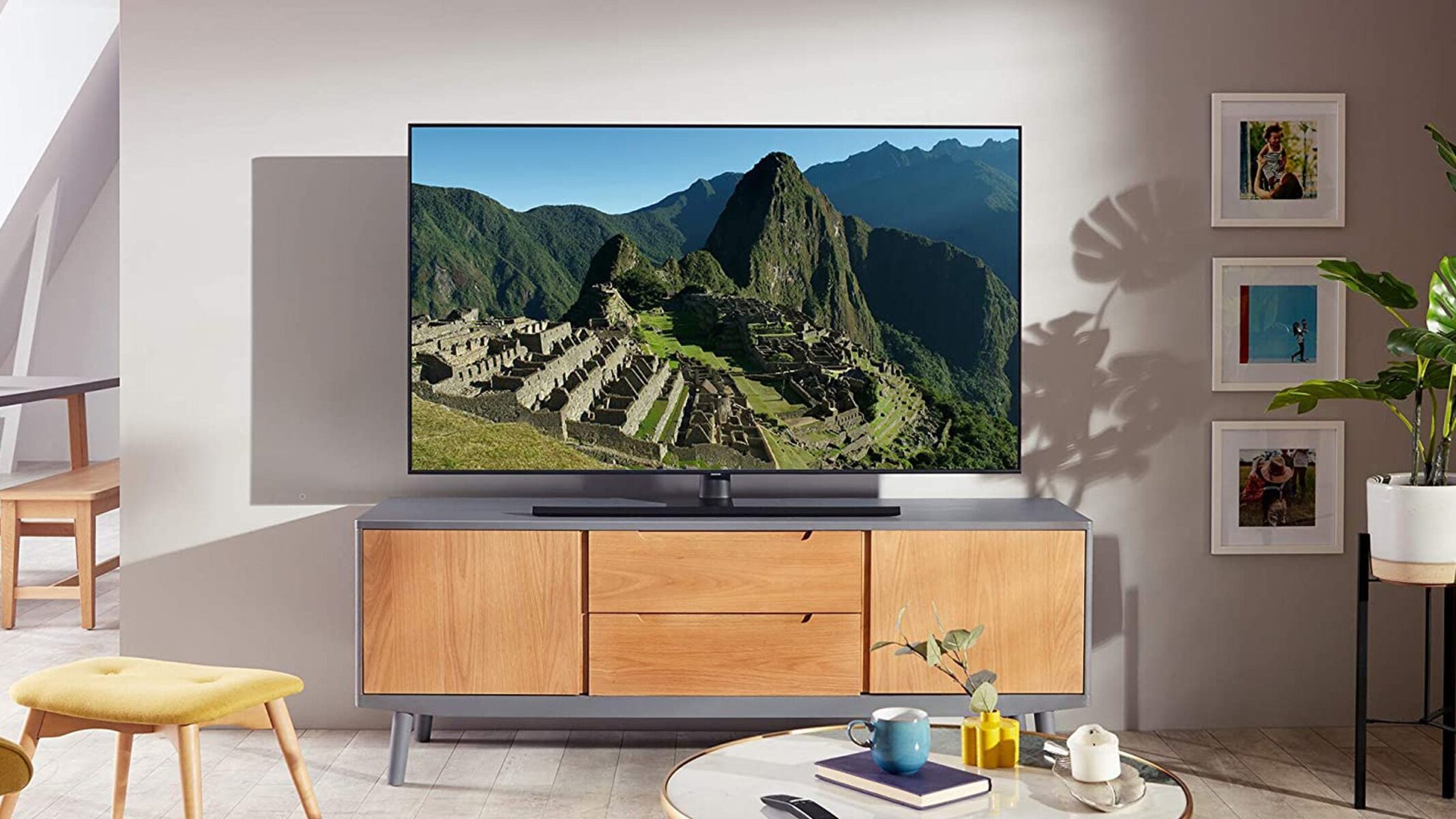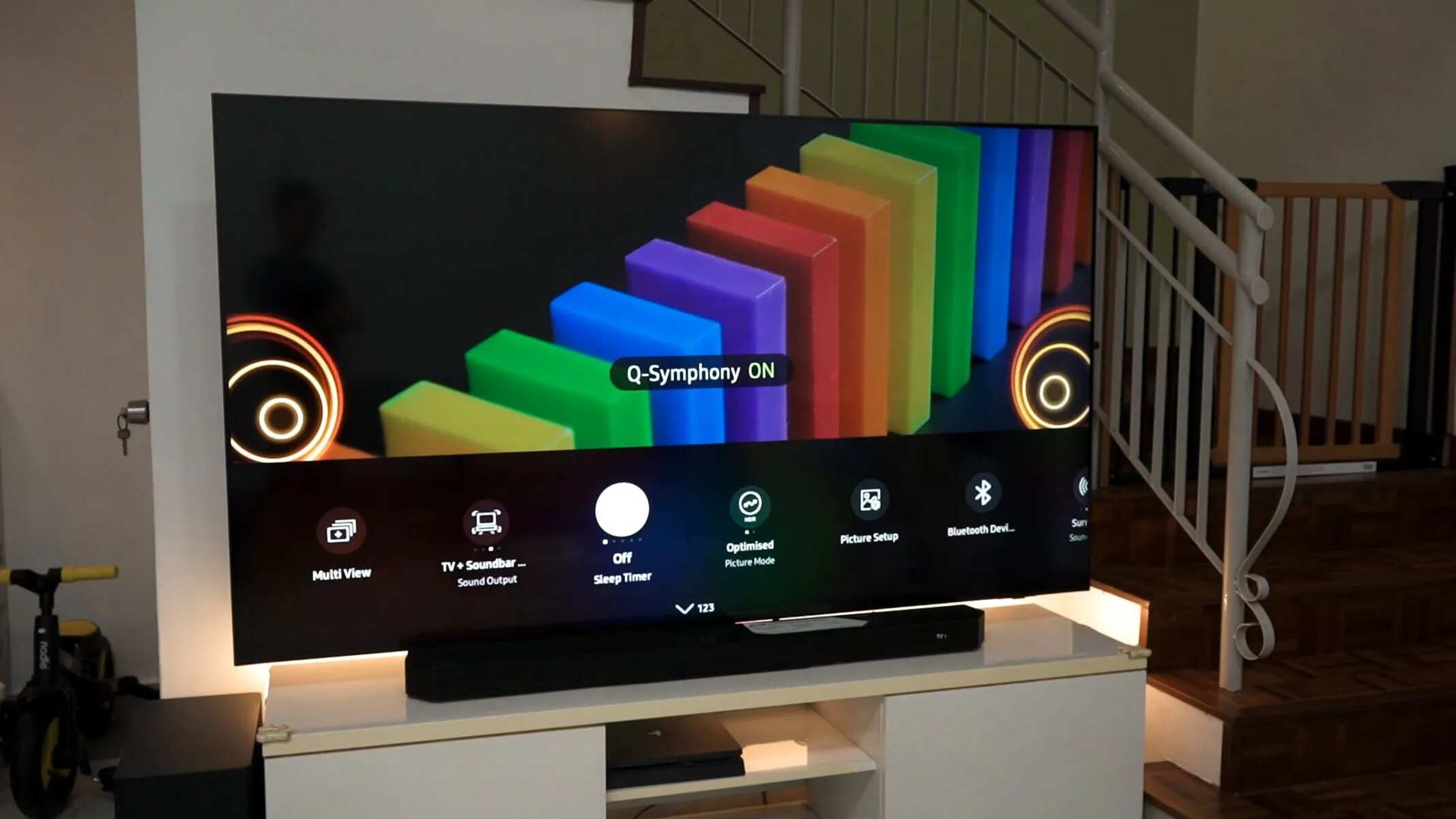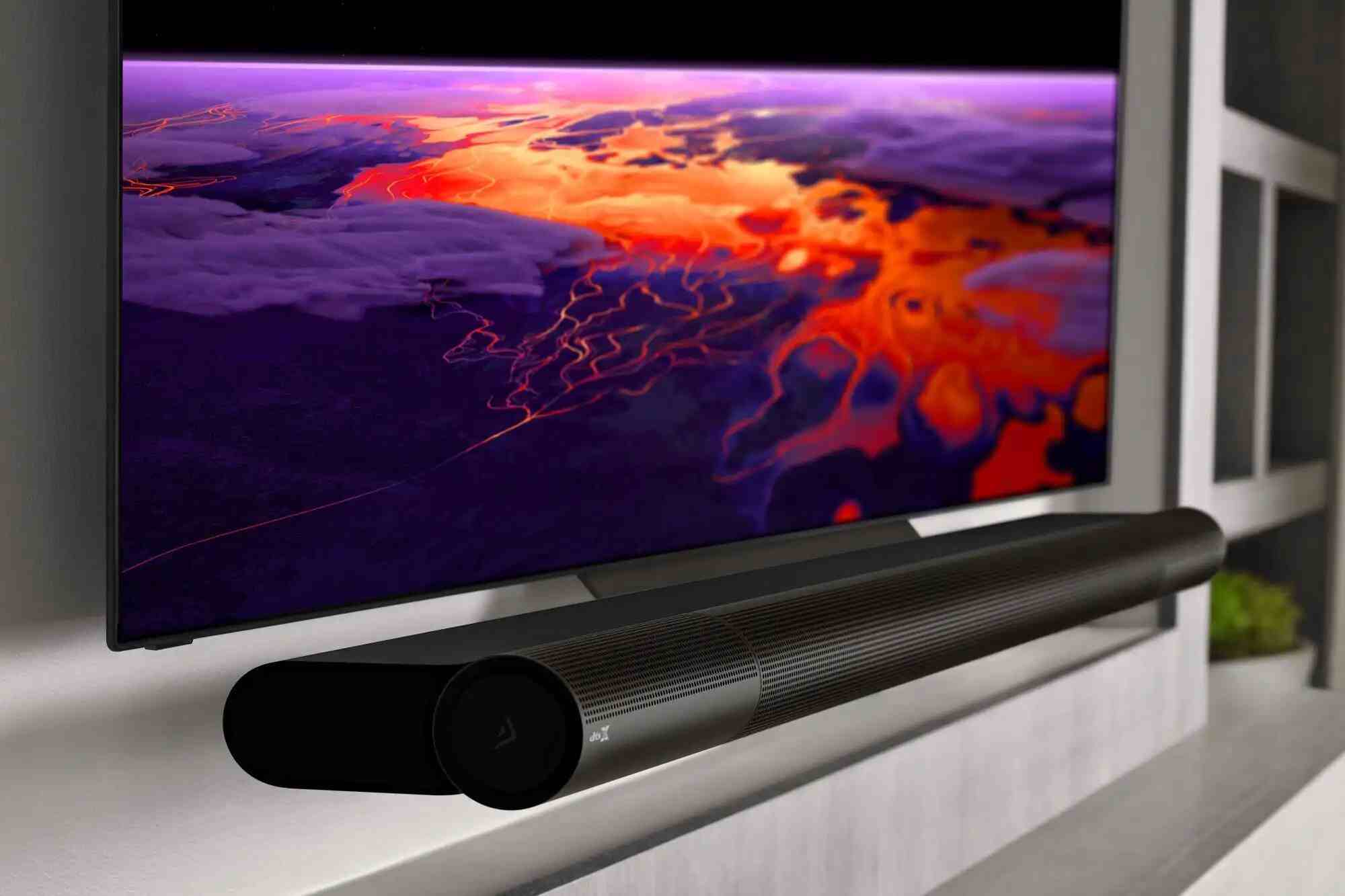Introduction
Welcome to the world of QLED TVs! In this era of advanced technology, television screens have undergone a radical transformation. QLED, an acronym for Quantum Dot Light Emitting Diode, has emerged as a cutting-edge display technology that offers breathtaking picture quality, vivid colors, and a truly immersive viewing experience.
The rise of QLED TVs has revolutionized the way we enjoy our favorite movies, TV shows, and sports events. With their superior visual performance and sleek design, QLED TVs have become a sought-after choice for home entertainment enthusiasts. If you’re considering upgrading your television, it’s essential to understand what a QLED TV is and why it might be the perfect choice for your viewing needs.
In this article, we will delve into the world of QLED TVs, exploring their technology, advantages, and key differences compared to other popular display technologies. Whether you’re a tech-savvy individual or simply curious about the latest TV innovations, this guide will provide you with all the necessary information to make an informed decision.
So, let’s dive in and discover what sets QLED TVs apart from the competition, and why they have become the talk of the town among home theater enthusiasts.
What is a QLED TV?
A QLED TV is a type of television that utilizes Quantum Dot technology to produce vibrant and lifelike colors. Unlike traditional LCD TVs, which rely on LED backlighting, QLED TVs incorporate tiny semiconductor nanoparticles called Quantum Dots. These Quantum Dots are capable of emitting light when exposed to a specific wavelength, resulting in precise and accurate colors on the screen.
The Quantum Dots in a QLED TV are made up of semiconductor materials like cadmium selenide or indium phosphide. These materials have unique optical properties that allow them to emit different colors based on their size. By carefully engineering the size of the Quantum Dots, manufacturers can control the wavelengths of light that are emitted, resulting in a wide and vibrant color gamut.
One of the key advantages of QLED technology is its ability to produce high levels of brightness. The Quantum Dots used in QLED TVs can be illuminated by a blue LED backlight, and the light emitted by the Quantum Dots is then filtered to create the desired colors. This allows QLED TVs to achieve impressive levels of peak brightness, making them ideal for watching HDR content and ensuring that every detail is accurately displayed.
Additionally, QLED TVs offer excellent color accuracy, thanks to the precise control of Quantum Dots. The ability to emit specific wavelengths of light enables QLED TVs to reproduce a wide range of colors, resulting in realistic and lifelike images. Whether you’re watching a nature documentary or a thrilling action movie, the colors on a QLED TV will be rich, vibrant, and true to life.
Furthermore, QLED TVs often feature advanced image processing technologies to enhance the viewing experience. These technologies work in conjunction with the QLED display to improve contrast, reduce motion blur, and optimize color reproduction. With the combination of Quantum Dot technology and intelligent picture processing, QLED TVs deliver stunning visuals that captivate viewers and bring their favorite content to life.
How does QLED technology work?
QLED technology utilizes a combination of Quantum Dots and LED backlighting to create stunning visuals on the television screen. Here’s a step-by-step breakdown of how QLED technology works:
- LED Backlighting: QLED TVs, like their LCD counterparts, use LED backlighting to illuminate the screen. An array of LEDs is positioned behind the liquid crystal layer, which acts as a filter.
- Quantum Dots: The key difference between QLEDs and traditional LCDs lies in the implementation of Quantum Dots. These microscopic semiconductor nanoparticles are placed in a thin film directly in front of the LED backlight.
- Wavelength Conversion: When the LED backlight emits blue light, the Quantum Dots in front of it absorb the blue light. The absorbed energy causes the Quantum Dots to emit light of a different color, depending on their size and composition. By carefully engineering the Quantum Dots, manufacturers can achieve precise control over the emitted color.
- Color Filters: The emitted light from the Quantum Dots then passes through color filters in the LCD layer. These filters separate the light into red, green, and blue components, which combine to create a full-color image.
- Image Processing: QLED TVs often employ advanced image processing algorithms to further enhance the visual output. These algorithms analyze the incoming signal and optimize brightness, contrast, and color accuracy to ensure the best possible picture quality.
Through this combination of LED backlighting, Quantum Dots, color filters, and image processing, QLED technology produces stunning and vibrant visuals. The precise control over color reproduction and enhanced brightness levels result in vivid, lifelike images that make every scene come to life.
It’s important to note that while QLED technology is impressive, there are some inherent limitations. QLED TVs still rely on an LCD panel, which can lead to issues such as backlight bleeding or limited viewing angles. However, manufacturers have made significant advancements in minimizing these drawbacks, and QLED TVs continue to provide an exceptional viewing experience for consumers.
Advantages of QLED TVs
QLED TVs offer several advantages that make them a compelling choice for home entertainment. Here are some key benefits of QLED technology:
- Color Accuracy and Vibrancy: QLED TVs utilize Quantum Dot technology to deliver exceptional color accuracy. The precise control over color reproduction ensures that every hue is vivid and true to life. Whether you’re watching a nature documentary or a movie with stunning cinematography, the colors on a QLED TV will be rich and vibrant.
- Brightness and HDR Performance: QLED TVs boast impressive brightness levels, making them ideal for watching HDR content. With enhanced peak brightness, QLED displays bring out the subtle details in bright scenes and prevent dark areas from appearing murky. This ensures a more immersive and dynamic viewing experience.
- Wide Viewing Angles: Unlike some other display technologies, QLED TVs offer excellent viewing angles. This means that you can enjoy the same stunning visuals from various positions in the room without a significant loss in color accuracy or contrast.
- No Burn-In Risk: Another advantage of QLED technology is that it does not suffer from the same risk of burn-in as OLED displays. Burn-in occurs when a static image is displayed on the screen for an extended period, causing permanent image retention. QLED TVs do not face this issue, allowing for worry-free usage.
- Improved Energy Efficiency: QLED TVs are designed with energy efficiency in mind. These displays utilize LED backlighting, which consumes less power compared to older technologies. As a result, QLED TVs are more environmentally friendly and can help reduce your electricity bills.
- Sleek and Thin Design: QLED TVs often feature sleek and slim designs that add a touch of elegance to any living space. The thin profiles and narrow bezels make these TVs visually appealing, allowing them to blend seamlessly into modern home décor.
- Advanced Smart Features: QLED TVs typically come equipped with advanced smart features, such as built-in streaming platforms, voice control capabilities, and interactive interfaces. These features make it easier than ever to access your favorite content and enjoy a seamless and intuitive entertainment experience.
These advantages, combined with the stunning visual quality, make QLED TVs a standout choice for those seeking the ultimate home entertainment experience. Whether you’re a movie enthusiast, a sports fan, or a gaming aficionado, QLED technology delivers breathtaking imagery that enhances your viewing pleasure.
QLED vs. OLED: What’s the difference?
When it comes to high-end display technologies, two names often stand out: QLED and OLED. While both offer exceptional picture quality, they utilize different approaches to achieve their stunning visuals. Let’s explore the key differences between QLED and OLED:
1. Display Technology: QLED stands for “Quantum Dot Light Emitting Diode,” while OLED stands for “Organic Light Emitting Diode.” QLED TVs utilize Quantum Dot technology with LED backlighting, whereas OLED TVs use self-emitting organic compounds that light up each pixel individually.
2. Black Levels and Contrast: OLED technology has a significant advantage when it comes to black levels and contrast. Since each pixel in an OLED display emits its own light, it can independently turn off to achieve true blacks. This results in exceptional contrast levels and perfect black reproduction. QLED TVs, on the other hand, rely on LED backlighting, which can cause some light leakage, leading to slightly reduced contrast and black levels.
3. Color Accuracy and Vibrancy: QLED TVs excel in color accuracy and vibrancy due to their Quantum Dot technology. The precise control over Quantum Dots allows QLED displays to reproduce a wide color gamut with meticulous accuracy. OLED displays also offer excellent color accuracy but may have slightly different color representation due to their organic compounds.
4. Brightness: QLED TVs have an advantage in terms of brightness levels. The LED backlighting in QLED displays can achieve higher peak brightness, making them ideal for HDR content and enhancing overall visual impact. OLED displays have lower peak brightness levels, although they can still produce impressive imagery.
5. Viewing Angles: OLED displays have exceptional viewing angles, with minimal color shift or loss of contrast when viewed from the sides. This makes OLED TVs ideal for larger rooms or situations where multiple viewers are seated at different angles. QLED TVs also offer good viewing angles but may experience slight color and contrast degradation when viewed from extreme angles.
6. Risk of Burn-In: One disadvantage of OLED technology is the potential risk of burn-in. Burn-in occurs when static images are displayed for extended periods, causing permanent image retention. QLED TVs do not suffer from this issue, making them more suitable for scenarios where static images are frequently displayed, such as video game interfaces or news tickers.
Both QLED and OLED technologies have their strengths and deliver exceptional picture quality. The choice between the two ultimately depends on your specific requirements and preferences. If you prioritize perfect blacks, wide viewing angles, and a risk-free usage experience, OLED is an excellent option. On the other hand, if you value vibrant colors, high brightness, and worry-free usage, QLED technology is a great choice.
Popular QLED TV models
As QLED technology continues to gain popularity, many television manufacturers have embraced this cutting-edge display technology and have released their own QLED TV models. Here are some of the most popular QLED TV models currently available in the market:
- Samsung Q90T: The Samsung Q90T is widely regarded as one of the top QLED TVs on the market. It boasts an array of advanced features, including Samsung’s Quantum Processor, which optimizes picture quality in real-time. With exceptional color accuracy, high brightness levels, and excellent motion handling, the Q90T offers a truly immersive viewing experience.
- LG QNED Series: LG has introduced its QNED series, which combines Quantum Dot and NanoCell technologies to deliver stunning visuals. These QLED TVs offer deep blacks, vibrant colors, and wide viewing angles. With powerful processors and AI-enhanced picture quality, LG’s QNED series provides a compelling option for home theater enthusiasts.
- Sony X95J: The Sony X95J boasts impressive picture quality and a feature-rich experience. With Sony’s renowned X1 Ultimate Picture Processor, this QLED TV delivers accurate colors, high contrast, and excellent upscaling capabilities. The X95J also supports various HDR formats, including Dolby Vision, ensuring a captivating cinematic experience.
- TCL 6-Series: TCL has gained recognition in the QLED TV market with its 6-Series models. These QLED TVs offer a combination of affordability and impressive performance. With Quantum Dot technology, Dolby Vision support, and Roku TV integration, the TCL 6-Series delivers vibrant colors, deep blacks, and a user-friendly smart TV experience.
- Vizio P-Series Quantum: Vizio’s P-Series Quantum is a popular choice among budget-conscious consumers looking for QLED technology. Offering excellent color reproduction, high peak brightness, and local dimming, the P-Series Quantum delivers impressive image quality. With SmartCast integration and a competitive price point, it provides a compelling option in the QLED TV market.
These are just a few examples of the top QLED TV models available, and the market continues to evolve with new releases and advancements in technology. It’s important to consider factors such as budget, desired screen size, and specific features when choosing the right QLED TV for your needs. Reading reviews, comparing specifications, and visiting showrooms can also help you make an informed decision.
Is a QLED TV worth it?
Deciding whether a QLED TV is worth it depends on your personal preferences, budget, and viewing needs. While QLED technology offers several advantages, it’s important to consider whether these benefits align with your priorities. Here are a few factors to consider when determining the value of a QLED TV:
Picture Quality: QLED TVs excel in color accuracy, vibrancy, and brightness. If you appreciate stunning visuals with lifelike colors and impressive high dynamic range (HDR) performance, a QLED TV can enhance your viewing experience significantly.
Viewing Conditions: QLED TVs offer a good balance between wide viewing angles and minimal color shift. If you have a large room or multiple seating positions, a QLED TV can ensure that everyone enjoys a brilliant image, regardless of their viewing position.
Affordability: Compared to OLED TVs, QLED models tend to be more affordable, making them an attractive option for those on a budget. If you’re looking for a high-quality TV without breaking the bank, a QLED TV may be the right choice for you.
Content Consumption: QLED TVs often come equipped with advanced smart features, allowing you to easily access streaming platforms, apps, and other online content. If you enjoy streaming movies and TV shows or playing video games, a QLED TV can provide a seamless entertainment experience with its intuitive interface and convenient connectivity options.
Longevity and Future-Proofing: QLED technology is continuously improving, with advancements in color accuracy, peak brightness, and energy efficiency. Investing in a QLED TV now can ensure that you have a future-proof display that will continue to provide exceptional picture quality for years to come.
It’s worth mentioning that no display technology is perfect, and QLED TVs do have limitations. Some potential drawbacks include slightly reduced black levels compared to OLED displays and potential issues like backlight bleeding or limited viewing angles. However, manufacturers have made significant improvements to address these concerns and deliver an outstanding viewing experience.
In the end, the decision to invest in a QLED TV depends on your priorities and budget. If you value vibrant colors, high brightness, and affordability, a QLED TV can be a worthwhile investment. However, it’s always recommended to research different models, read reviews, and compare specifications to ensure that you choose a QLED TV that meets your specific needs and provides the best value for your money.
Conclusion
QLED technology has emerged as a game-changer in the world of televisions, offering stunning visuals, vibrant colors, and a captivating viewing experience. With Quantum Dot technology and advanced features, QLED TVs have quickly gained popularity among home entertainment enthusiasts.
In this article, we explored the concept of QLED TVs and how they work, highlighting their advantages over traditional LCD displays. We delved into the differences between QLED and OLED technology, providing insights into their respective strengths and unique features. Additionally, we discussed popular QLED TV models currently available in the market, giving you a glimpse of the options to consider when looking to upgrade your TV.
Whether it’s the exceptional color accuracy, high brightness, or wide viewing angles, QLED TVs offer benefits that can enhance your viewing pleasure. However, the decision to invest in a QLED TV ultimately comes down to your personal preferences, budget, and viewing needs. It’s crucial to consider factors such as picture quality, affordability, and future-proofing when making your decision.
As QLED technology continues to evolve and improve, it’s an exciting time for home entertainment enthusiasts. With advancements in color reproduction, brightness levels, and energy efficiency, QLED TVs are poised to deliver even more immersive and lifelike viewing experiences in the years to come.
So, whether you’re a movie lover, a gaming enthusiast, or someone who simply appreciates stunning visuals, a QLED TV can be a worthwhile investment. Just remember to carefully research different models, compare specifications, and read reviews to ensure that you choose the QLED TV that best suits your specific needs and provides the best value for your money.







